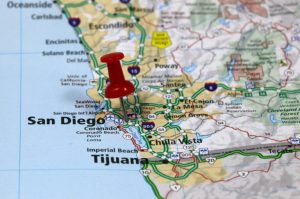
Throughout the grand opening month of September, the store sells 80 of these shirts. All 80 of these shirts would have been from the first 100 lot that was purchased under the FIFO method. To calculate your ending inventory you would factor in 20 shirts at the $5 cost and 50 shirts at the $6 price.
- If accountants use a COGS calculation from months or years back, but the acquisition cost of that inventory has tripled in the time since, profits will take a hit.
- This can benefit early businesses looking to get loans and funding from investors.
- Discover the top 5 best practices for successful accounting talent offshoring.
- For this reason, companies must be especially mindful of the bookkeeping under the LIFO method as once early inventory is booked, it may remain on the books untouched for long periods of time.
How to calculate FIFO

Let’s assume that a sporting goods store begins the fifo formula accounting month of April with 50 baseball gloves in inventory and purchases an additional 200 gloves. Goods available for sale totals 250 gloves, and the gloves are either sold (added to cost of goods sold) or remain in ending inventory. If the retailer sells 120 gloves in April, ending inventory is (250 goods available for sale – 120 cost of goods sold), or 130 gloves. Choosing—and sticking to—an inventory valuation method to measure these amounts is essential in keeping tax-ready books.
- This means that goods purchased at an earlier time are usually cheaper than those same goods purchased later.
- The remaining two guitars acquired in February and March are assumed to be unsold.
- The FIFO method is allowed under both Generally Accepted Accounting Principles and International Financial Reporting Standards.
- Note that the $42,000 cost of goods sold and $36,000 ending inventory equals the $78,000 combined total of beginning inventory and purchases during the month.
How does deflation affect FIFO ending inventory calculation?
So, which inventory figure a company starts with when valuing its inventory really does matter. And companies are required by law to state which accounting method they used in their published financials. The company made inventory purchases each month for Q1 for a total of 3,000 units. However, the company already had 1,000 units of older inventory that was purchased at $8 each for an $8,000 valuation. In the tables below, we use the inventory of a fictitious beverage producer called ABC Bottling Company to see how the valuation methods can affect the outcome of a company’s financial analysis. FIFO can be a better indicator of the value for ending inventory because the older items have been used up while the most recently acquired items reflect current market prices.

How To Calculate LIFO
- Not only is net income often higher under FIFO but inventory is often larger as well.
- The opposite to FIFO, is LIFO which is when you assume you sell the most recent inventory first.
- The FIFO method of costing is an accounting principle that states the cost of a good should be the cost of the first goods bought or produced.
- Here are some of the benefits of using the FIFO method, as well as some of the drawbacks.
- But it requires tracking every cost that goes into each individual piece of inventory.
Through the software, we get real-time insight into how much inventory to allocate to a specific warehouse, our current on-hand inventory levels, and how long each SKU is going to last by location. ShipBob provides a lot of distribution metrics, and everything presented is useful. Suppose a coffee mug brand buys 100 mugs from their supplier for $5 apiece. A few weeks later, they buy a second batch of 100 mugs, this time for $8 apiece.

The second way could be to adjust purchases and sales of inventory in the inventory ledger itself. The problem with this method is the need to measure value of sales every time a sale takes place (e.g. using FIFO, LIFO or AVCO methods). If accounting for sales and purchase is kept separate from accounting for inventory, the measurement of inventory need only be calculated once at the period end.
Why You Can Trust Finance Strategists
When Sterling uses FIFO, all of the $50 units are sold first, followed by the items at $54. In this case, the store sells 100 of the $50 units and 20 of the $54 units, and the cost of goods sold totals $6,080. The average cost method is the simplest as it assigns the same cost to each item.
- To calculate her COGS for the trade show, Bertie will count 100 bars at $2.00 and 200 at $1.50.
- It is generally said that the FIFO method of costing is the most practical because it follows a natural flow.
- FIFO is generally preferred over LIFO (Last In, First Out), which artificially reduces profits and taxes by matching current sales with oldest inventory costs.
- Use inventory management software or enhance your accounting system to include fields for purchase dates, item tracking, and automated FIFO costing.
- Managing inventory requires the owner to assign a value to each inventory item, and the two most common accounting methods are FIFO and LIFO.
- While FIFO offers a clearer snapshot of inventory composition, weighted average can be easier to apply operationally.
What’s the difference between inventory management and warehouse management?
However, if you only had 10 units of your oldest inventory in stock, you would multiply 10 units sold by the oldest inventory price, and the remaining 5 units by the price of the next oldest inventory. Using the FIFO inventory method, this would give you your Cost of Goods Sold for those what are retained earnings 15 units. Assuming that prices are rising, this means that inventory levels are going to be highest as the most recent goods (often the most expensive) are being kept in inventory. This also means that the earliest goods (often the least expensive) are reported under the cost of goods sold. Because the expenses are usually lower under the FIFO method, net income is higher, resulting in a potentially higher tax liability. The FIFO method of costing is mostly used in accounting for goods that are sold.
